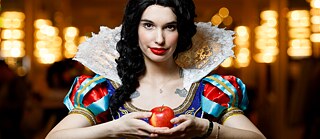Once upon a time – there was an ancient text form that can be found in all cultures. These fantastic stories were so important that they were even recognised as intangible cultural heritage in Germany in 2016. About five German fairy tales that still live on our bookshelves today.
Kinder- und Hausmärchen – Brüder Grimm
When you think of fairy tales, the first thing that comes to mind is the brothers Jacob and Wilhelm Grimm – and the author is by no means saying this because of the obvious relationship between their names. The Kinder- und Hausmärchen (Children's and household tales) of the brothers – colloquially known as Grimm's Fairy Tales – have had a significant influence on our idea of the fairy tale genre to this day. From 1812, the brothers brought together and revised many of the most important popular stories in this collection. It contains over 200 stories, all of which have been numbered consecutively by literary researchers – the story of Cinderella, for example, bears the less fairytale-like name KHM 21.
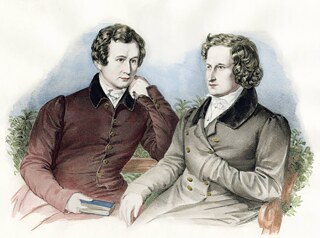
The brothers Wilhelm and Jacob Grimm are world-famous: as linguists and, above all, as collectors of fairy tales. Their “Children's and Household Tales” are the most widely read, best-selling and most translated German-language book. | Photo (detail): © picture alliance / akg-images | akg-images
Der Sandmann – E.T.A Hoffmann
Published in 1816, this tale may evoke long-repressed memories of exams in German lessons for some. Der Sandmann (The Sandman) by E.T.A. Hoffmann is actually worth a second look. It is also a fairy tale, or to be more precise: an art fairy tale. Unlike the collection by the Brothers Grimm, these fairy tales can be attributed to one author; they are not traditional folk tales. Today's horror fans can be grateful to Hoffmann, as Der Sandmann is regarded as a key precursor to the horror story – the motif it contains of the relationship between man and machine could hardly be more topical.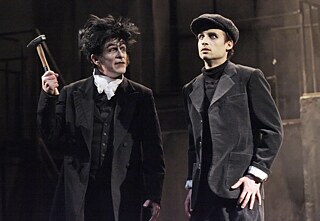
The Sandman - it's also a scary fairy tale when performed. Theatre play by Thomas Martin after E.T.A. Hoffmann and Oskar Panizza at the Volksbühne Berlin | Photo (detail): © picture alliance / Eventpress Hoensch | Eventpress Hoensch
Der Dichter – Hermann Hesse
The name Hermann Hesse is primarily associated with his prose works such as Der Steppenwolf (Steppenwolf) and Narziss und Goldmund (Narcissus and Goldmund). However, the German-Swiss Nobel Prize winner also wrote numerous fairy tales. One of them is called Der Dichter (The Poet). It is about the journey and self-discovery of the Chinese poet Han Fook. Without this work, published in 1919, there would perhaps be no Siddartha or Das Glasperlenspiel (The Glass Bead Game) – Hesse took up some of the motifs that appear in the fairy tale in his well-known texts.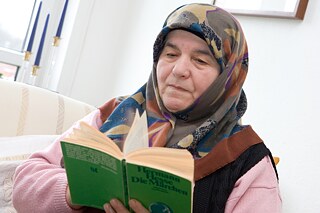
Inspiring reading: The fairy tales of Hermann Hesse | Photo (detail): ©picture alliance / Caro | Dobiey
Momo – Michael Ende
One of the best-known books for young people is actually a fairy tale – in other words, a fictionalised story with no specific time or place. At well over 200 pages, Momo by Michael Ende is quite long for a fairy tale, which is why it is often referred to as a “fairy tale novel”. Anyone who doesn't have enough time to read the book, which was first published in 1973, should rely on the eponymous protagonist: she fights against the theft of time by the grey lords.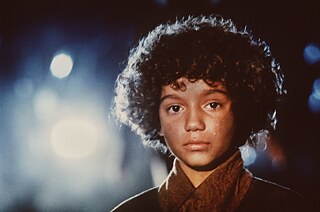
Momo, performed by Radost Bokel – in the film adaptation of the classic children's book by Michael Ende | Photo (detail): © picture-alliance / dpa | dpa-Film
Die Kinder in der Erde – Gudrun Pausewang
With her novels Die letzten Kinder von Schwewenborn (The Last Children of Schewenborn) and Die Wolke (The Cloud), Gudrun Pausewang wrote in favour of peace, the environment and young people in the wake of the nuclear arms race and the Chernobyl nuclear disaster. Die Kinder in der Erde (The Children in the Earth), a fairy tale penned by the multi-award-winning author of children's and young adult books, could hardly be less socially relevant: children rebel against adults who do too little to stop the destruction of the environment. Incidentally, it was not just published in recent years, but as early as 1988.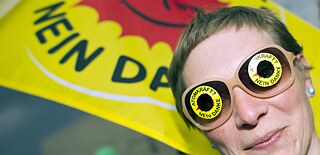
Gudrun Pausewang would have liked that: In her books she warned against the use of nuclear energy | Foto (Detail): © picture alliance / ZB | Arno Burgi
November 2024
